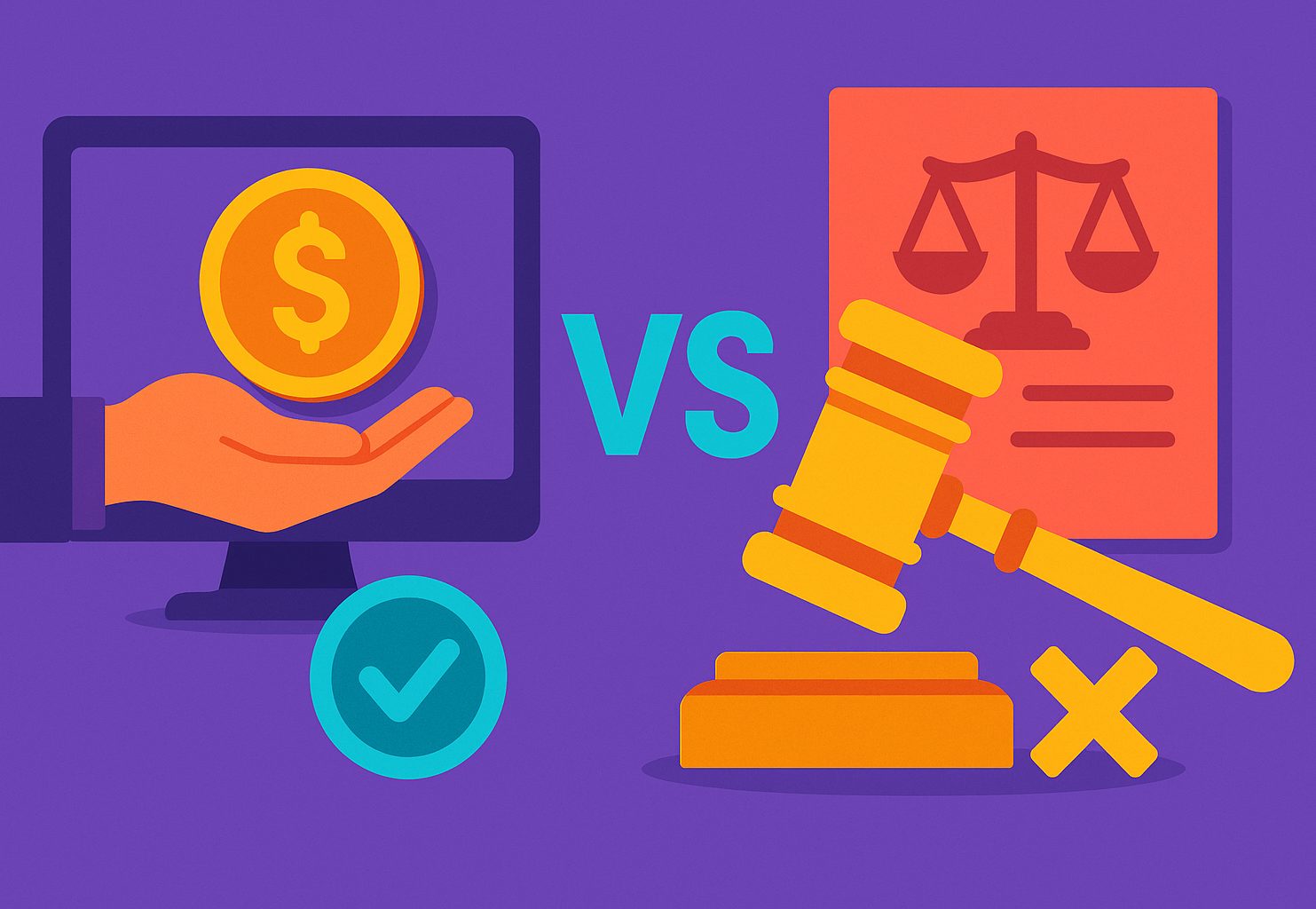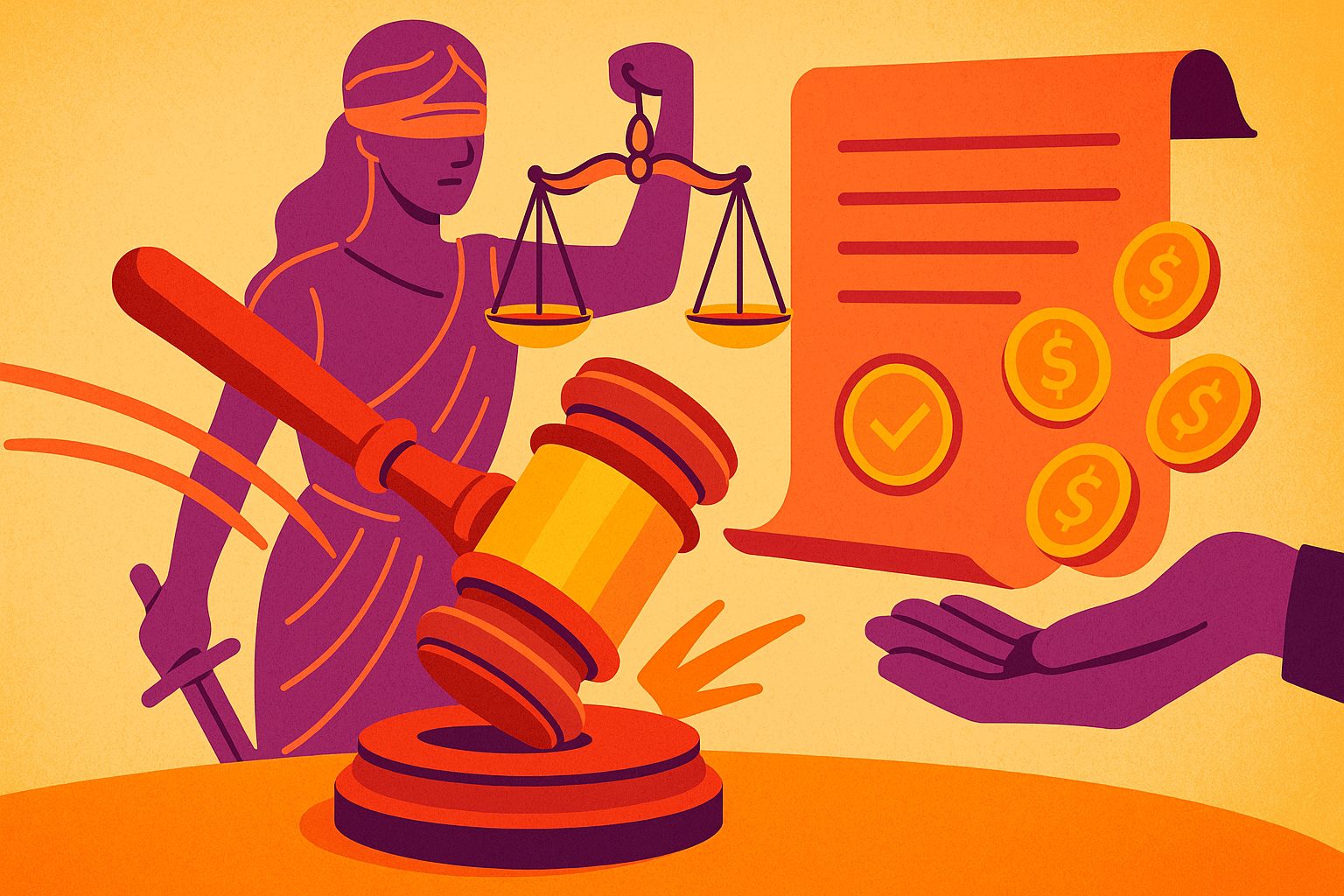Turning Legal Battles Into Smart Investments
Litigation crowdfunding is more than a justice-driven movement—it’s a bold new frontier for investors looking to diversify their portfolios and tap into an uncorrelated asset class. As lawsuits transform into investment opportunities, a new breed of funders is emerging: those seeking not just to support important legal causes, but to generate competitive financial returns. Maximizing investor returns in litigation crowdfunding requires a fusion of legal insight, risk management, strategic timing, and platform intelligence. When done correctly, it offers not only the potential for outsized profits but also the satisfaction of backing meaningful claims with real-world impact.
The Mechanics of Litigation Crowdfunding as an Investment
At its core, litigation crowdfunding allows investors to fund legal cases in exchange for a share of any resulting settlement or court award. Unlike traditional equity or real estate markets, the success of a litigation investment depends on legal merits, procedural developments, and judicial decisions—not macroeconomic cycles. This independence from market trends makes litigation funding a compelling addition to a diversified investment portfolio. However, investors must understand that the returns are binary: either the case wins and produces returns, or it fails and the investment may be lost entirely. Thus, the key to maximizing returns lies in rigorous case selection, smart diversification, and careful structuring of participation terms.
Identifying High-Value Legal Claims
Not all lawsuits are created equal, and savvy litigation investors know how to spot cases with strong fundamentals. The most lucrative opportunities often involve clear liability, quantifiable damages, and well-prepared legal teams. Commercial disputes, class actions, intellectual property claims, and mass torts frequently rank among the most promising cases due to their scale and settlement potential. Legal merit must be backed by practical considerations: the jurisdiction, the track record of the legal counsel, and the availability of enforceable assets from the defendant. Seasoned platforms often pre-vet claims before making them available to investors, but conducting your own due diligence is crucial. Understanding how to evaluate litigation risk is the first step in generating reliable returns.
Diversification as a Defense Strategy
Litigation investing carries significant risk, but that risk can be mitigated through diversification. Just as in venture capital, not every case will yield a return, but a portfolio approach allows wins to offset losses. Smart investors spread their capital across a variety of case types, legal jurisdictions, and plaintiff profiles. By participating in multiple cases simultaneously, investors reduce the chance that a single unfavorable outcome will significantly impact their overall returns. Some platforms now offer fund-style products that bundle multiple cases into a single investment vehicle, providing built-in diversification and reducing exposure to individual claim volatility. For investors seeking consistency and stability, this approach is often a strategic choice.
Timing the Investment for Maximum Return
In litigation crowdfunding, timing matters. Some investors enter cases at the pre-filing stage, where returns may be higher but so are the risks and uncertainties. Others prefer mid-litigation entry points, after critical legal milestones—such as motions to dismiss or summary judgments—have been resolved. Still others invest just before trial or settlement, seeking lower-risk exposure with correspondingly lower returns. Each phase carries a different risk-reward profile. Investing early may offer larger profit shares but requires patience and a tolerance for uncertainty. Later-stage investments, while safer, may be diluted by earlier funders. Knowing when to enter—and when to walk away—can significantly impact overall profitability.
Platform Selection: Where You Invest Matters
Not all litigation crowdfunding platforms are created equal. Some offer open-access funding for consumer-level claims, while others cater to accredited investors seeking large-scale commercial litigation opportunities. The quality of case vetting, transparency of terms, and ease of exit options vary widely. When choosing a platform, investors should assess the experience of the legal advisory board, the rigor of case analysis, and the clarity of return structures. Regulatory compliance, investor protections, and security protocols are also non-negotiables. Top-tier platforms act more like financial institutions than GoFundMe pages, offering detailed prospectuses, periodic case updates, and data-driven performance metrics. Aligning with the right platform can make the difference between consistent gains and frustrating setbacks.
Structuring Returns: How Deals Are Designed
The return structure in litigation crowdfunding is usually contingent on a successful resolution. Investors typically receive a portion of the settlement or judgment, defined by the terms of the funding agreement. The waterfall structure may include repayment of legal costs, platform fees, and a pro-rata distribution of profits. Some deals include preferred return thresholds, while others feature capped upside or fixed interest-style payments. Understanding how these deals are structured is essential for calculating your potential ROI. Investors should pay attention to how risks are allocated, what happens in case of appeal, and whether returns are gross or net of legal expenses. A clear and fair structure not only builds investor confidence but also aligns all parties around a common goal—winning the case.
Active vs. Passive Involvement in Case Progress
While most litigation crowdfunding is designed to be passive, investors who seek maximum returns may want to stay actively informed. Many platforms offer case updates, legal milestones, and performance dashboards. Monitoring these details can help you assess portfolio health, identify red flags early, and rebalance your exposure over time. In some cases—especially for larger investors or institutional players—there may be opportunities to engage more deeply, such as participating in legal strategy discussions or negotiating exit terms in advance of settlement. While not suitable for every investor, this hands-on approach can offer deeper insight and potentially better outcomes, especially in complex or multi-stage litigation.
Legal Milestones That Influence Return Potential
Understanding the legal process is critical for any litigation investor. Certain milestones dramatically affect a case’s value—and the timing of your return. For example, surviving a motion to dismiss often increases a case’s credibility and potential worth. Winning a key evidentiary ruling or summary judgment motion can push parties toward favorable settlements. On the other hand, procedural delays, discovery disputes, or judicial bias can slow progress or reduce expected returns. A well-informed investor keeps track of these developments and considers how they impact the case’s financial trajectory. By mapping legal progress to financial metrics, investors gain better forecasting ability and can adjust strategies accordingly.
Managing Liquidity and Exit Options
Litigation investments are inherently illiquid—once your capital is committed, it may be locked up for months or even years. That said, some platforms are beginning to explore secondary markets, allowing investors to sell their stakes to other backers before the case resolves. While these secondary offerings are still in their infancy, they represent a crucial development for maximizing investor returns, particularly for those seeking shorter time horizons. Alternatively, some platforms allow investors to negotiate exit terms in advance or roll returns into subsequent cases. Knowing your liquidity needs—and choosing platforms that support them—is a key factor in optimizing both risk and reward.
Legal Ethics and Investor Protections
Maximizing returns isn’t just about financial mechanics—it’s also about staying within ethical and legal boundaries. Litigation finance is subject to evolving rules about transparency, attorney independence, and disclosure. Ethical investing means understanding how your involvement affects the case. Are attorneys being pressured to settle early? Are funders being disclosed to courts and opposing counsel? Responsible platforms protect both investors and litigants by ensuring that funding arrangements are fully compliant and ethically sound. For investors, working with ethically-aligned platforms reduces regulatory risk, enhances reputation, and contributes to a more sustainable and respected legal finance industry.
Case Study: How One Investment Turned into a Windfall
Consider a hypothetical example of an investor who backed a commercial trade secret case at the pre-discovery stage. The plaintiff had a strong claim, a reputable legal team, and clear evidence of damages. The platform offered a 30% return cap with a pro-rata waterfall distribution. After two years of litigation and multiple procedural wins, the defendant opted to settle for $8 million. Legal fees and platform costs totaled $2 million, and the fund’s total return to investors was 2.5x. The investor, who committed $25,000, received a payout of $62,500—realizing a profit of $37,500. While not every case ends this way, well-chosen opportunities have the potential to deliver strong, meaningful returns in proportion to risk.
Leveraging Tax Strategies and Legal Structures
Sophisticated litigation investors often work with tax professionals to structure their participation in tax-efficient ways. Depending on your jurisdiction, returns from litigation investments may be treated as capital gains, ordinary income, or even partnership distributions. Understanding how returns will be taxed allows you to plan accordingly and preserve more of your profits. Some investors also choose to invest through self-directed IRAs, trusts, or holding companies to maximize flexibility and minimize tax exposure. Platforms that provide annual tax documentation, 1099s, or K-1 forms make this process easier. Smart legal structuring is an often-overlooked lever for improving net returns without increasing risk.
The Role of Institutional Capital in Amplifying Returns
Institutional investors are increasingly entering the litigation crowdfunding space, bringing with them capital, credibility, and demand for transparency. Their presence pushes platforms to adopt higher standards in reporting, risk analysis, and deal structure. For individual investors, this trend offers advantages—access to better-curated cases, stronger governance, and a more mature investment ecosystem. It also creates opportunities for co-investment, syndication, and pooled fund participation. As litigation crowdfunding grows, the line between alternative investing and mainstream finance continues to blur, offering retail investors a front-row seat to a high-performing and professionally managed asset class.
Looking Ahead: The Evolution of Litigation Investment Returns
The next generation of litigation crowdfunding platforms is being built for scale, automation, and global reach. Smart contracts may soon automate investment agreements and payouts. AI-driven case evaluation tools will sharpen underwriting precision. Decentralized funding pools could allow real-time participation in global legal battles. As innovation drives efficiency, investor returns may improve—especially for those who stay ahead of trends and adapt to new technologies. The investors who thrive in this environment will be those who combine financial acumen with legal curiosity, operational discipline, and a willingness to support justice as a profitable endeavor.
Final Thoughts: Profit with Purpose
Litigation crowdfunding represents the convergence of profit and purpose. It offers investors a unique opportunity to back compelling legal claims, support access to justice, and earn attractive returns in the process. But success in this field isn’t guaranteed—it demands insight, discipline, and strategy. By understanding the mechanics of legal finance, selecting strong cases, managing risk through diversification, and choosing the right platforms, investors can unlock significant value. More than just a financial play, litigation crowdfunding allows investors to be part of a bigger story—one where winning cases means more than dollars and cents, and where every return reflects a stand taken for fairness and accountability.
In the courtrooms of tomorrow, the smartest investors won’t just be watching—they’ll be backing the verdicts that shape the world.




